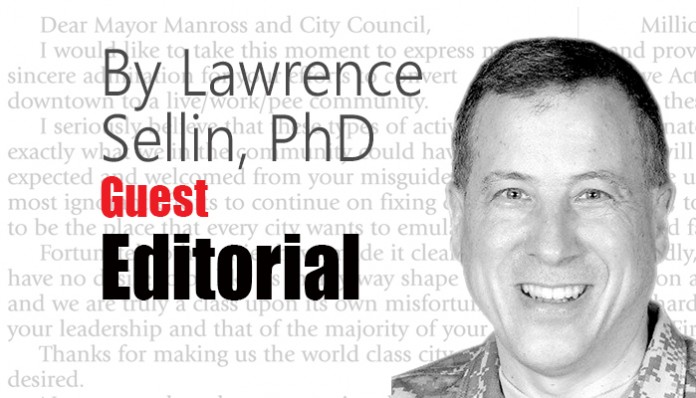How do you define insurgency and insurgent groups?
I define an insurgency similarly to that described in the U.S. Army Field Manual 3-24. Insurgencies arise when parts of the population grow dissatisfied with the status quo and are willing to fight to change the conditions to their favor, using both violent and nonviolent means to effect a change in the prevailing authority. An insurgency is the organized use of subversion and violence to seize, nullify, or challenge political control of a region.
Although the Taliban are using classical insurgency tactics, what is happening in Afghanistan is not an insurgency. It is a proxy war being conducted by Pakistan using the Taliban to gain a dominating political influence in Afghanistan in the pursuit of Pakistani national aims. Pakistan created the Taliban in the 1990s for that purpose and Pakistan has sustained and supported the Taliban since 2001 for the same reason.
According to your experience how these groups are been made and how they manage to grow?
Again, I think FM 3-24 provides a useful guide as to how insurgencies grow or fail. It is based on legitimacy, that is, acceptance of authority by society. The population of a country decides who has the legitimacy to establish the rules and the government for that society. A population’s values and cultural norms will determine who that society perceives as a legitimate authority. Both the insurgency and the country’s government attempt to control the population by some mixture of consent and coercion.
Here we must distinguish between an insurgency and a proxy war. Although Afghans may have grievances with the Kabul government and may, at times, agree with certain positions held by the Taliban, the Taliban are not a movement indigenous to Afghanistan. As already stated, the Taliban are a creation of the Pakistani military and an instrument of Pakistani foreign policy. After the Taliban defeat in 2001, they were provided a safe haven in Pakistan, where an elaborate support infrastructure was established to provide recruitment, training, infiltration routes and medical treatment for Taliban fighters.
Do you believe that Afghanistan is a great platform for them to raise and have a high level of growth here?
The terrorist threats to Afghanistan come from the outside, either when those outside forces create instability inside Afghanistan or try to create a government in Afghanistan that hosts terrorists as Pakistan did with the Taliban in the 1990s when al Qaeda established a base in Afghanistan.
For example, there is a lot of concern now about the Islamic State in Afghanistan, which actually originates from and is sustained by Pakistan.
Members of the Pakistani Taliban (Tehrik-e Taleban Pakistan, TTP) began migrating to Afghanistan’s Nangarhar Province as “refugees” in 2010 after Pakistani military operations against the TTP in Orakzai and Khyber Agencies of the Federally Administered Tribal Areas.
It was those “refugees” who provided a foundation for the Islamic State. That base support was augmented by thousands of Pakistanis who fought for ISIS in Syria and returned starting in 2013.
In January 2015, the Islamic State of Khorasan Province (ISKP) was declared with former TTP commander Hafiz Saeed Khan of Orakzai as the leader, whose 12-member Shura had nine Pakistanis.
An ISKP support zone was set up in Pakistan adjacent to the Haqqani Network support zone.
What are the major aspects that the insurgency is growing in South Asia on a daily basis?
As stated above, it is not so much the growth of the insurgency as the growth of terrorism where the greatest focus should be placed, on Pakistan, not on Afghanistan.
The Taliban is a creation of Pakistan. Pakistan-based terrorist groups such as Lashkar-e-Taiba and Jaish-e-Mohammad are attacking India. The Pakistan-based Sunni supremacist group Jaish-ul-Adl attacks Iran. Pakistan also uses such extremist groups to suppress ethnic and religious minorities inside Pakistan.
It is that growing level of extremism and intolerance in Pakistan that should be of concern, which has been a threat to Afghanistan and will be the main contributor to instability in South Asia.
It is the direct result of official Pakistani policy.
The 1979 Iranian Shia revolution accelerated “Islamization” in Pakistan, for example, the 1985 formation of the Deobandi Sipah-e-Sahaba, an offshoot of Jamiat Ulema-e-Islam, founded to counter Shia influence in Pakistan.
In 1996 elements within the Sipah-e-Sahaba who did not believe the organization extreme enough left to form Lashkar-e-Jhangvi
Lashkar-e-Jhangvi al-Alami is a splinter group of Lashkar-e-Jhangvi and a Pakistani partner for the Islamic State has conducted terrorist attacks inside Pakistan, primarily in Balochistan.
Nevertheless, successive Pakistani governments have found it useful to employ members of those groups as “non-state actors” in its foreign policy and as a paramilitary force to suppress domestic unrest. We are currently seeing that play out in Pakistan’s suppression of the Pashtun Tahafuz Movement using the Taliban as enforcers for the Pakistani military.
Lawrence Sellin is a retired U.S. Army Reserve colonel with branch qualifications and assignments in Special Forces, Infantry and Medical Services.





